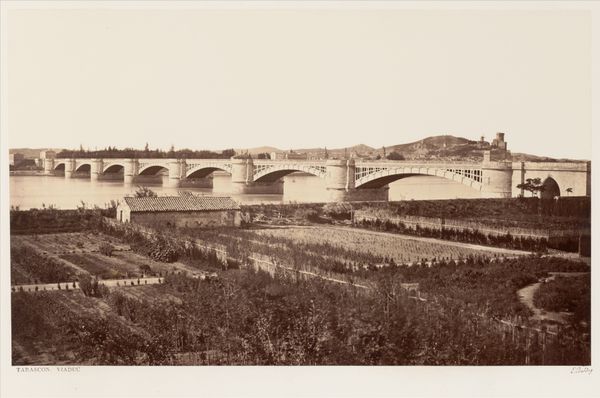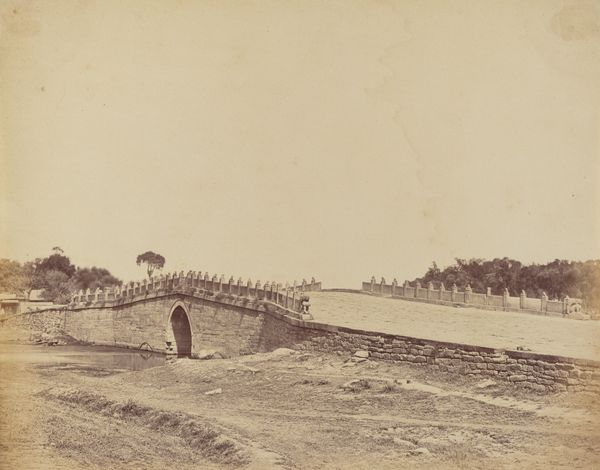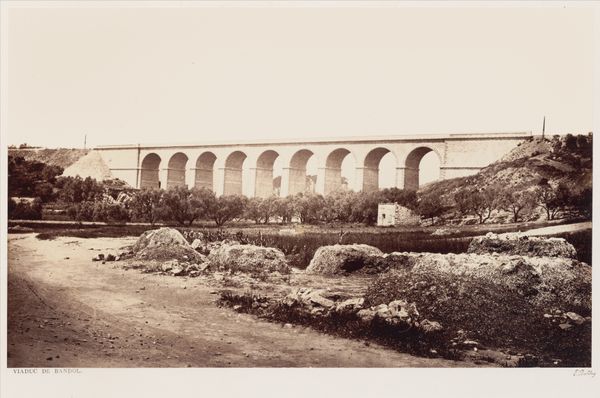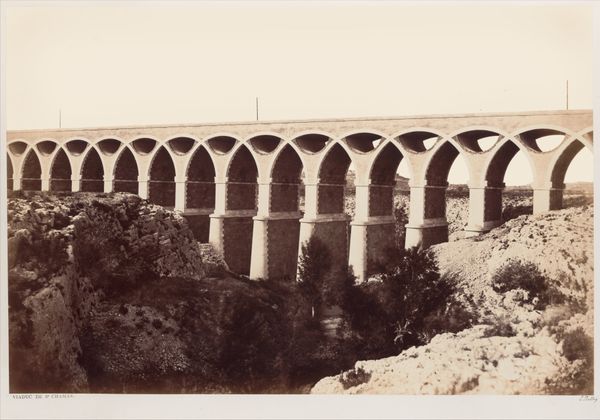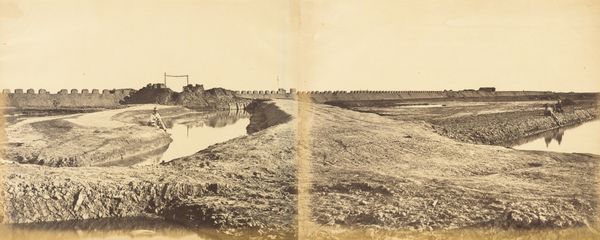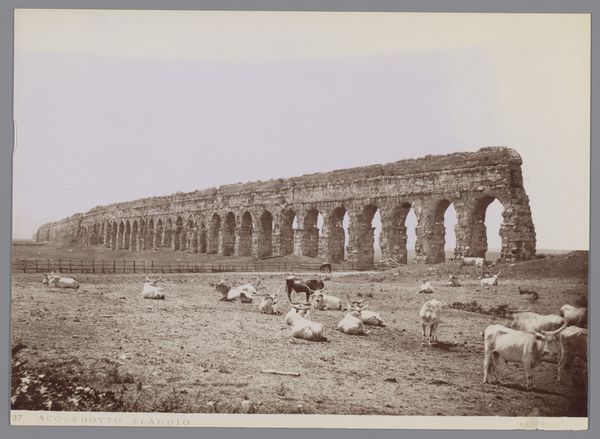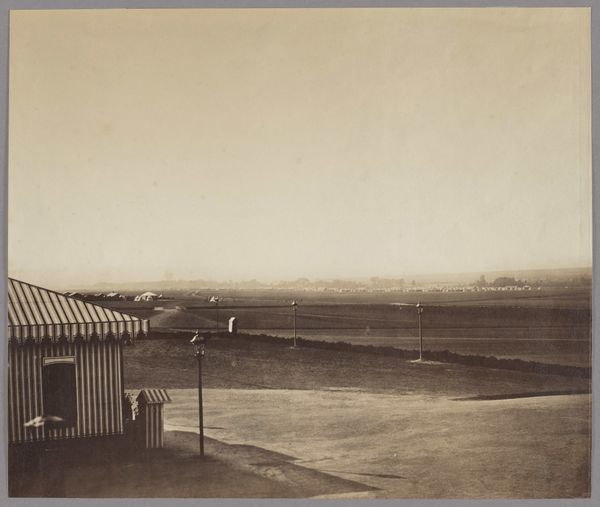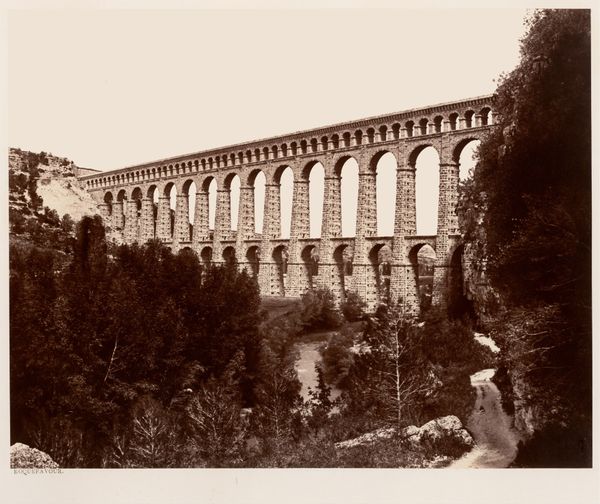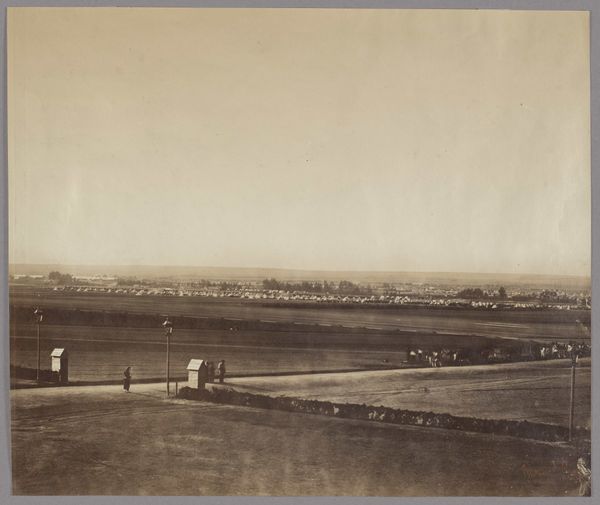
Arcades de pont sur Vanne (Arcades, Bridge over the Vanne) 1873
0:00
0:00
print, photography, albumen-print, architecture
# print
#
countryside
#
landscape
#
photography
#
geometric
#
ancient-mediterranean
#
monochrome photography
#
albumen-print
#
architecture
Dimensions: overall: 31.5 x 42.8 cm (12 3/8 x 16 7/8 in.)
Copyright: National Gallery of Art: CC0 1.0
Hippolyte-Auguste Collard made this photograph of the Arcades de pont sur Vanne using a process called calotype, one of the earliest photographic techniques. The calotype process involves coating paper with silver iodide, exposing it in a camera, and then developing the latent image. This creates a paper negative, which can then be used to make multiple positive prints. What's fascinating here is how the inherent qualities of the materials—the paper's texture, the light-sensitive chemicals—influence the final image. You can see a softness, an almost painterly quality, that distinguishes it from later, sharper photographic methods. Consider the social context: the construction of infrastructure like this aqueduct was a massive undertaking, involving a great deal of labor and engineering skill. Collard, as an official photographer for the French government, was tasked with documenting these modern achievements. His choice of the calotype process, with its blend of science and craft, reminds us that even in the age of industrial progress, the human touch remains essential.
Comments
No comments
Be the first to comment and join the conversation on the ultimate creative platform.


